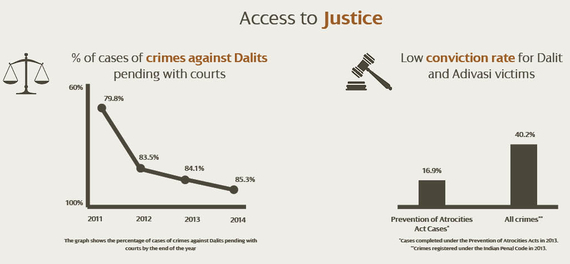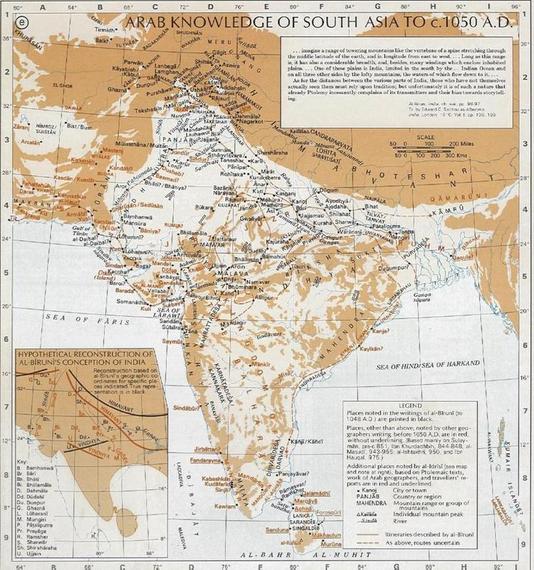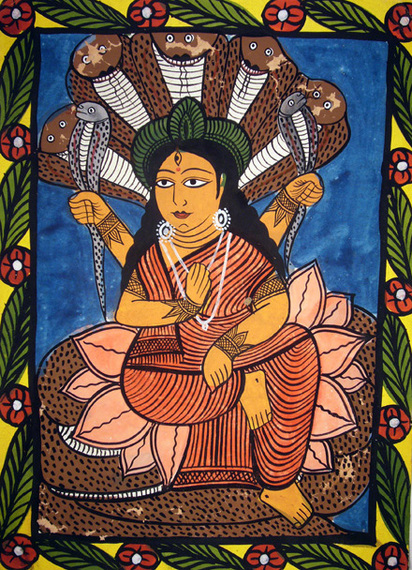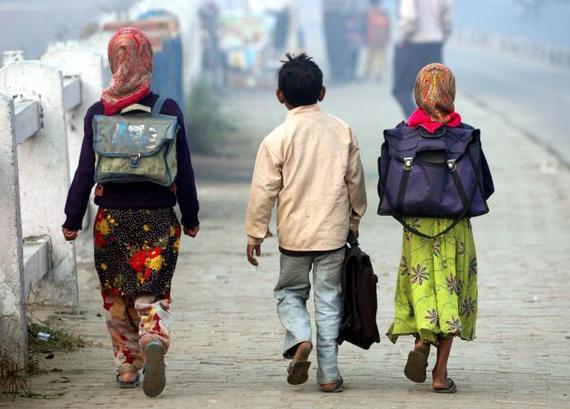In May 2015, UC Irvine was offered a donation of $6 million from the nonprofit the Dharma Civilization Foundation. Such an endowment, in these hard financial times, seemed like a gift too good to be true. Yet, sustained campaign from faculty and graduate students forced the University to reject the gift. The move created (mostly negative) headlines everywhere.
Along with several of my colleagues who study South Asia, I was a signatory to the open letter that urged UC Irvine to reject the donation.
We argued that the Dharma Civilization Foundation (DCF) was
part of a right-wing Hindu group of organisations that has been known to undermine Indian pluralism through an agenda that seeks to redefine true "Indianness" in terms of a historically-fabricated continuity in "Indic" religions (a list of religions that excludes the sub-continent's traditions of Islam, Christianity and Zoroastrianism), and a privileging of upper-caste, "Vedic" Hindu identity. The DCF, although registered as a US non-profit organisation, is directly tied, through its office holders and its ideological roots, to the Rashtriya Swayamsevak Sangh (hereafter RSS), an organization that is the main proponent of the political ideology of Hindu nationalism, or "Hindutva."
Once the letter was in the public domain our inboxes began to fill with hate mail. The various kinds of threats, many physical, were expected. After all you do not challenge the RSS, with its extensive history of violence, with the expectation that they are going to go gently into the California night.
But perhaps more nefarious than threats of direct violence was the claim that we were lining up with racist "westerners" and assisting in their age old plot to undermine India and Indians. Some of these emails tried to explain to us how we were undermining multiculturalism in the US.
It is always somewhat energizing to be taught antiracism by adherents of the RSS, one of whose founding ideologues, Vinayak Damodar Savarkar, was a great admirer of Hitler and one of whose members, Nathuram Godse, assassinated Mahatma Gandhi for being too 'generous' to Muslims.
But now another 'controversy' looms before us as a struggle unfolds over how 'Hinduism', or Indian history, is taught at the K-12 level in California public schools.
Leading South Asianists have recommended that school textbooks use the phrase "the religion of Ancient India" rather than "Hinduism or "the religion of India." They argue that students ought to be taught about the caste system, especially the "the phenomenon of untouchability." The committee of scholars whose members had "been raised in Hindu, Buddhist, Sikh, Muslim, Christian, and Jewish faiths" further explained that the idea of Hinduism as a uniform, single religion with definite structures and texts is a relatively modern one:
When we consider how Hinduism (indeed, any religion) is practiced today, there are so many strands and such a variety of beliefs and practices that someone belonging to one form of Hinduism may be unaware of other forms of Hindu practice. The input from one particular strand of Hinduism today is important for understanding that unique interpretation of Hinduism, but that is only one view within a very large mosaic of Hindu beliefs and practices.
Of course these colleagues faced a renewed bout of attacks from the Hindu right following these recommendations. There is even a petition urging parents with children in the California school system to act against these scholarly recommendations because apparently there is now a danger of erasing "India and Hinduism from California's schools".
I started writing this column to raise questions about whether certain religions were monolithic. With a Trump nomination assured and some Hindus, in the name of all Hindus, deciding to campaign for him, it seems the right moment to talk about the ahistorical claims of a unitary Hinduism.
Salma's Laxmi
My grandparents bought a house in Calcutta in the early 1960s, while still living in Dhaka, then in East Pakistan. Dhaka was the city where they had brought up four children, built their work-lives, had loved and shared the city together. I suppose by today's definition my grandparents would be called "Hindu." But both of them, born in the first decade of the twentieth century, were avowed atheists with lifelong involvement in social justice politics.
In the Calcutta of the 1960s my grandmother met a young woman. Let's call her Salma. She lived in the slums that bordered the houses of the rich of South Calcutta and she was Muslim. She worked as a domestic help in homes, mostly owned by Hindus.
Salma's family was from Dhaka; they had moved to India before Salma was born right before the riots of 1946.
"Wouldn't you like to visit Dhaka sometimes, Salma?" My grandmother asked her one day."I have been" replied Salma crossly, "but am never going back.""Why not?" asked my grandmother with some surprise."Well, the Mussalmans [muslims] there [i.e. in East Pakistan] laughed at me because I worshipped goddess Laxmi. I might be a Muslim Mrs Nandy, but it doesn't mean I am going to give up my right to worship Laxmi!"
My grandmother, an atheist 'Hindu,' put her arms around Salma, the 'Muslim,' who was outraged at being mocked for worshipping Laxmi--by all accounts (textual, popular, and theological) a Hindu goddess.
It made sense to both of them that their deeply embedded lifehistories in multiethnic cities, on multiple registers, could never be captured by the inadequate labels of "hindu" and "muslim." The labels were too small to fit life.
It is now hard for me to recall this story, told to me as a child, veiled as it now is by an archive of grief and a sense of panic. In sharp contrast to this story, my own youth in India, from the late 1980s, was spent in the shadow of a very precise Hinduism--Hindutva--that claims a uniform and linear history going back thousands of years.
This Hinduism has a clear sense of who are Hindus and who are not. There is no room for Salma in this Hinduism. There is hardly any room for my grandmother.
I hardly remember the school leaving finals I took in 1987, instead what I remember of that year are the riots that swept through Meerut, Moradnagar and Maliana. What marks 1992 for me is not my college graduation but the demolition of the Babri Masjid and the anti-Muslim pogroms that followed. Perhaps we should have known then that this was prologue for Gujarat in 2002.
Throbbing alongside the gruesome numerals of Muslim deaths is the everyday, constant violence against Dalits by caste Hindus. Today in Mr. Modi's shining India 13 Dalits are murdered, 21 Dalit women are raped and 5 Dalit homes are burnt, each week. According to some estimates there is a crime committed against a Dalit person in India every 18 minutes.
The only public Hinduism I have experienced in my lifetime is one drenched in riots, pogroms and anti-Dalit violence.
So we look back, to a time before this Hinduism. For sometimes, in order to look ahead, we have to look back.
Origins of "Hindu"
The word 'Hindu' began life as a geographic and then an ethnic term, not a religious one.
Hindu, is a Persian variant of the Sanskrit word Sindhu, originally used by the Achamaenid Persians to describe both the land and the people beyond the Indus or Sindhu River. The word can be found in inscriptions from as early as 517 BCE. It refers to the Indus people, or Indians. For over a thousand years, Hindu as a geographic and ethnic category referred to all Indians.
Indeed "Hindu" as a specific religion is utterly absent in early Indian history. This is because people did not belong to specific religions, but rather to specific religious tendencies/sects (eg. Shaivite) or castes (eg. Brahman). To refer to the group of people inclusive of all of those sects and caste groupings as 'Hindu' would have made little sense to contemporaries.
It is important to note that there was also no corporate identity for "Muslims" as a homogenous religious grouping. Arabs, Afghans Turks and other invaders and travellers from the West were referred to variously as Tajika, Yavana, Saka, Turuska or mleccha: none of these terms carried religious connotations.
The umbrella term: Hinduism--so common today in popular and even some academic writing--is actually of very recent vintage. It strenuously groups together beliefs, rites and practices that have little in common, have different beginnings and often hostile histories to each other.
HinduISM or Hindu Religions?
The differences between the various kinds of Hindu orders/sects are so great that it is more accurate to talk about Hindu ReligionS rather than HinduISM.
Let us consider just three (many more exist) such expressions of being 'Hindu'.
1. Vedic Hinduism is taken by many on the Hindu far Right, to be the sole representative of HinduISM.
Mid-to-late second millennium B.C.E. is generally accepted to be the timeline for the composition of the Rig Veda.
This 'Hinduism' accords a central role to the ritual sacrifice (yajna), has a wide pantheon of deities and sees the Brahman priest as the chief intermediary between the gods and humanity. Indeed, the role of the Brahman, and hence caste hierarchy, is so central to this form of 'Hinduism' that it has rightly been called Brahmanical Hinduism in clear distinction from other kinds.
The changing social conditions of the first millennium BCE proved to be significant for the fate of this kind of 'Hinduism'.
New agricultural techniques increased social wealth, in turn giving rise to trade, new urban centers and new social classes. Buddhism and Jainism were the two main religious tendencies that arose at this time as a direct challenge to Vedic Hinduism. Buddha and Mahavira were steadfastly opposed to the ritual of the sacrifice, to caste hierarchy and to the Brahman priest as the sole arbitrator for faith.
These new religions can be grouped under the term Sramanism (Sramana-mendicant) referring to the various ascetic and renunciatory religious traditions and sects of this period.
Accounts of foreign travellers give us a sense of how important these anti-Brahmanical religions were. Both the Greek traveler, Megasthenes, who visited India in late fourth century BCE, and the Chinese traveler Xuanzang, who visited India in seventh century CE, thought these traditions to be so important that they said that only two religious categories existed in India: Brahmanas and Sramanas!
2. The Bhakti tradition of the first millennium CE can be said to be heirs of the Sramanic traditions. A leading historian of Ancient South Asia, Romila Thapar writes about the multiple mosaic of the Bhakti sects:
The Pasupatas, the Alvars and Nayannars, the Saiva-Siddhanta and the Lingayats, Jnanesvara and Tukaram, Vallabhacarya, Mira, Caitanya, Sankaradeva, Basava, Lalla, Tulasidasa, and so on are often bunched together as part of the Bhakti stream. In fact there are variations among them which are significant...
Some among these...accepted the earlier style of worship [i.e. Vedic Hinduism]...others were hostile to the Vedic tradition: some objected to caste distinctions and untouchability, whereas for others such distinctions posed no problem. Some of the sects opposed to caste discouraged their members from worshipping in temples or going on pilgrimages...A few felt that asceticism and renunciation were not a path to salvation whereas others were committed to these. Kabir and Nanak for instance, infused Sufi ideas into their teaching." (Romila Thapar, "Syndicated Hinduism", 59-60).
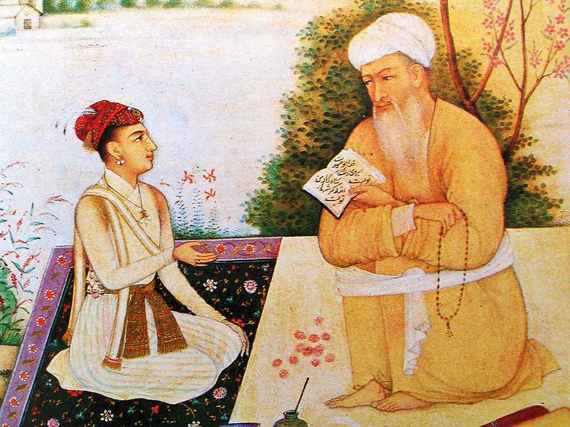 But the dissimilarities among the Bhakti sects, according to Thapar, ought not to be seen as their weakness, but rather as their strength.
But the dissimilarities among the Bhakti sects, according to Thapar, ought not to be seen as their weakness, but rather as their strength.
3. 'Folk' Hinduism: Yet another stream of Hindu religious practice can be grouped under what has been called "folk" Hinduism. This is the Hinduism of the tiger god, the snake goddess, of ghosts and demons, of generous libations of alcohol and meat, of non-Brahman priests--in other words: of the Brahmanic world turned upside down.
In sharp contrast with Vedic Hinduism --which is a cosmic playground for virile male gods--female goddesses play a pivotal role in folk Hinduism. It can be Sitala, the powerful goddess of smallpox and measles, who can smite you with the deadly disease. Or it can be Manasa the snake goddess who can offer you safe passage through a troublesome patch of the forest. Sometimes it is Chandi, who in some parts of the country can grant you good hunting while in other parts is worshipped for her ability to cure diseases.
The priests of folk Hinduism are often from the lower castes and all the forbidden comestibles of Vedic Hinduism--meat, alcohol--are celebrated and consumed with gusto. Some of the gods, such as Satya Pir, are constructed out of a syncretic melding of Islam and Hindu currents. There are no clear sets of rituals that cohere this tendency nor is it unitary in its spatial spread. Different parts of the country have different gods and rituals. In a sense, to label the adherent of Satya Pir or Manasa simply as a Hindu or a Muslim is to let the label tyrannize the vast, joyous, complicated histories of their worship.
The New Hinduism
Despite these histories of the various traditions one can still make a claim about a unitary HinduISM. This argument goes that the strength of Hinduism lies in its extreme tolerance and diversity, where all these different currents can co-exist under the same umbrella.
But this 'umbrella' itself was invented in the crucible of European colonialism. To mix our metaphors: Europeans were equipped with the lens of semitic religions like Christianity and Islam. Seen with such a lens, currents that were understood and practiced as religions in their own right, began to be understood as united and coherent despite evidence to the contrary.
The trajectory of the term 'Hindu' is one marker of the manufactured nature of Hinduism.
The meaning of the term 'Hindu' began to shift from 712 CE when Muslims began to settle in the Indus valley as rulers and citizens. Muslim rulers began to use the term 'Hindu' as an administrative category. Persian scholars such as Abū-l Qasim and Shahrastānī, however, spoke of various kinds of Hindu religions in their writings and there was never a sense of a uniform HinduISM as a contrastive category against which Islam was measured. Simply put, to the new settlers 'Hindus' corresponded exactly to 'Indians.'
But when Europeans began to use the term 'Hindoo' they used it precisely to differentiate them from the Muslim, the Christian, the Jewish and the Parsee people and thus, for the first time, 'Hindoo' was a term used not to mark a people, but to mark a religion. This was a crucial shift as for the first time Hindu received not just the distinction of a religion but all Hindus were thought to belong to this same religion.
From this, nineteenth century European scholarship took the small step to arrive at 'Hinduism', which, as one scholar put it, was the invented name given to the religion of the 'Hindus'.
Unlike Semitic religions like Christianity and Islam the various Hindu religions, prior to the invention of HinduISM, lacked common origins, any single founder or key foundational texts. But once there was something called 'Hinduism', there was a search for coherence and structure where previously none existed.
The historian Peter Marshall put it best when he commented: "As Europeans have always tended to do, they created Hinduism in their own image. Their study of Hinduism confirmed their beliefs and Hindus emerged from their work as adhering to something akin to undogmatic Protestantism". (Peter Marshall, The British Discovery of Hinduism in the Eighteenth Century).
But some traces of the past meaning of Hindu as Indian survived. Even in the early nineteenth century, European writers still referred to "Hindoo Christians" and "Hindoo Muslims" to distinguish between those who were native born and those who were not.
If there is no HinduISM what can we say of the various currents? Most serious scholarship on this question agrees that while we can safely reject Hinduism as an ahistorical invention, we can still talk about Hindu religions-- religions that are distinct and multifarious.
Although they do not share any common features we may call them related, but only in a qualified way.
The different Hindu religions are only related, as Heinrich Von Stietencron has pointed out, in the way Islam, Christianity and Judaism are 'related,' as "cognate but distinct religions united by origin in the same region (Near East) and common ancestry (all stand in the Abrahamic tradition)". But they are not different sects of the same religion. (Heinrich Von Stietencron, "Hinduism: On the Proper Use of a Deceptive Term").....I am writing about Hindu religious traditions, being extremely mindful of all the attacks my colleagues have faced, in India and abroad, for reminding us all of the real historical legacy of South Asia. I am mindful of all the banned books, the public witch hunts against people who have loved and studied this subcontinent and trained generations of students to do the same. I remember everyday a young graduate student who could not finish his research.
But mostly I am writing about Hinduism, again, because, here in the US where I now live, the California public school debate re-asserts for me to whom we owe the most responsibility for recounting history.
Walter Benjamin once remarked that children were "particularly fond of haunting any site where things were being visibly worked on". Benjamin thought that children loved all "detritus", all things-still-in-the-making. They played with and built upon such material, not to imitate adults, but to create "their own small world of things."
So I write this for the children in school and yet to arrive there, to present to them the detritus of history from my own generation such that they can salvage the best from it and re-forge a new "world of things".


